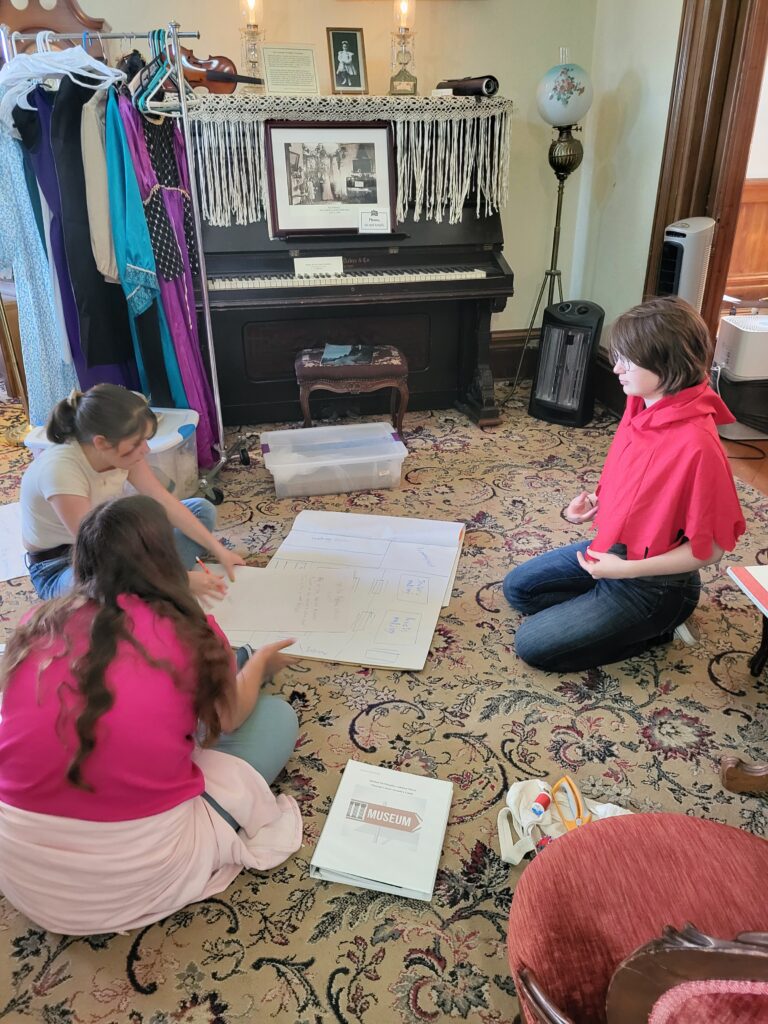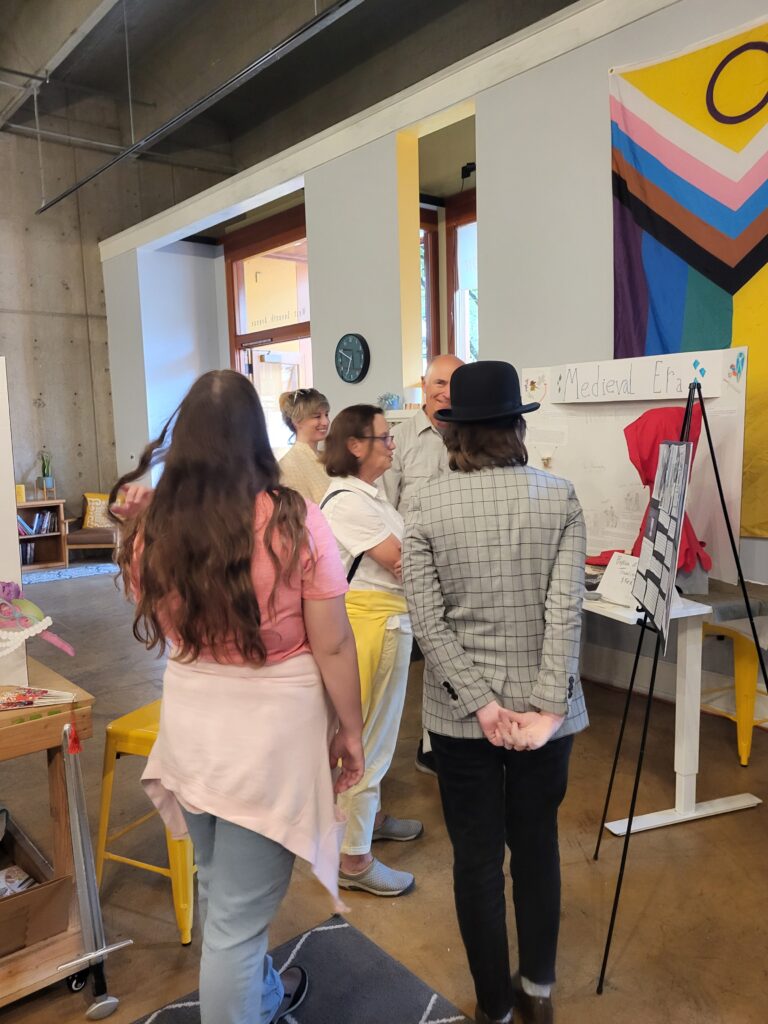
What is a Museum? What does it take to make a Museum ‘tick?’ This is the central question that the campers at Shelton Murphey Johnson House (SJM House) in Eugene, Oregon, set out to answer in a pilot program of their Museum Career Intensive Summer Camp. This brand-new summer camp was the brainchild of Leah Murray and was made possible by a community grant from the Lane County Cultural Coalition. The week-long camp focused on careers within the museum industry. Campers learned what goes into each department of a museum and the various skill sets that are required to make a museum (or zoo, nature center, or aquarium) work.
Campers got to explore and learn these skills using a project-based learning model, where they created a public exhibition that was presented at the First Friday Art Walk in Eugene. Some skills they learned while doing this camp included photography, research, curation, exhibit design, marketing, exhibit design, and educational programming. While they focused on these technical skills, they also had the opportunity to be coached through all the social-emotional skills needed when working collaboratively on a project.
During the week of camp, students also got to go on three field trips to museums that included backstage passes to see the vaults, curation spaces, and museum capital expansion projects. The three museums were: the Museum for Natural and Cultural History, The Lane County History Museum, and The Adventure Children’s Museum.
Leah contacted me in the Spring to see if I would be available to contribute by hosting an experience for the students. I was excited to have the opportunity to support this project with a workshop designed to walk the students through creating an educational program targeted at teens. This hands-on experience started with background building about what programming is and how it is used in museums to provide dynamic and user-centered experiences for diverse audiences. We used Teen Nights as a case study to explore what this programming might look like for a specific audience in different types of museums. I chose teen programming to make the workshop relevant and engage for the teens enrolled in this camp experience.
I broke the group up into two smaller groups. These groups were tasked with deciding on a target audience and brainstorming themes that would appeal to the agreed-upon audience. Once they selected their favorite, they worked together to design specific programming experiences for attendees. The two groups came up with entirely original ideas and had a lot of fun developing the outline for what they would teach and how it would be delivered.
Team One – Music at The Museum: This group decided to use the Museum of Pop Culture in Seattle as their program’s hypothetical location. They decided to focus on a middle school/high school audience, and they wanted to design a music-themed teen night. Their teen night was designed to be drop-in and allow for lots of choice and freedom for the teens by allowing them to move freely through a variety of different activities that would be happening in each of the museum galleries. Some of their topics included an instrument petting zoo, building an instrument in the tinkering space, and music trivia with prizes.
Team Two This team decided to focus on middle school students and designed an immersive week-long summer camp experience that was part role-play part European middle ages history education. Campers were given an identity to play (peasant, lord, lady, merchant, etc.) as well as familial connections. They were then tasked with surviving a variety of natural and supernatural obstacles using their skills and family support. They also developed a rigorous syllabus of hands-on educational experiences that the campers would get to do throughout the weeks to learn more about this period in history while they played the game.

Each team worked through drafts of their plans and then developed a marketing strategy for attracting their audience to their program. They then took turns presenting their material to the rest of the group.

When I interviewed Leah about her experience developing this camp, she shared with me her goals for both the students and the alignment of this specific camp to SJM House’s mission.
“ I started thinking some more about how much my kids [in Vicotrian Finishing School camp] enjoy the museum, enjoy coming to the camp every year, and that those kids are getting older, and I, wanted to [continue to engage them], and showcase some things that the Museum still has to offer them. How can I do that? There’s a lot of talk about careers, particularly here in Eugene, I think [the discussion centers around] your careers as opposed to just going to college. That’s where the idea for the Museum camp came from. How can I capture some of that energy? How can I help schools teach kids about using the skills they enjoy already in different careers?”
When I asked Leah what she thought was the biggest win for her in this first year of Museum Careers Camp, she shared this story with me.
“One of the kids that came to my Victorian camp, her mom and I were talking during the exhibit at Artwalk, and she was telling me that her daughter, a few years ago, turned her room into a museum, with tags, with Stories, and she charged admission and had everybody come through.”
This anecdote from the camper’s mom points to the match of this student’s interest in learning about museum careers. It demonstrates the need for students like her daughter to access opportunities that allow them to focus on specific careers that otherwise youth would not have access to.
Another win that Leah spoke about was having the mayor come to the final exhibition. The mayor’s support meant a lot to both SMJ House and the campers. She spent time interacting with the campers and asking them questions about their exhibits.
Leah said that she made a point of talking to some of the people who came to the showcase, specifically asking what they enjoyed about it. One attendee that she spoke with said that it wasn’t the exhibit itself that she enjoyed, it was thinking about the summer camp and what the kids learned and how they did it.

I sincerely enjoyed the opportunity to teach Leah’s campers about museum programming, and my personal favorite part about the workshop was seeing the students’ creativity and watching their confidence in a brand new skill that they knew nothing about before coming to camp flourish in just a few short hours.
If you would like more information or have questions for Leah about her experience with creating and running this camp, please feel free to reach out to me, and I would be happy to connect you.
